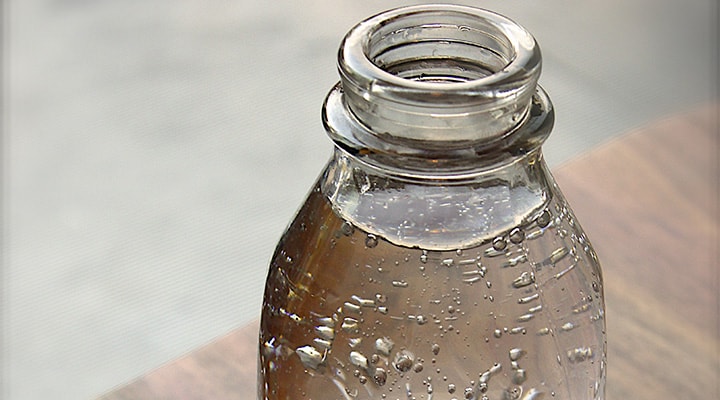
Have you ever wondered, “Is my ground water of the same quality as rain water? Is the water from the nearby stream safe to drink? What are the possible contaminants in the water I consume?” Though we intuitively know not to drink muddy water, it helps to gain a deeper understanding of the different aspects that define water quality. After all, water borne diseases are the leading cause of disease and death worldwide.
Water standards
While a few regions like the United States and Europe have drinking water standards with mandatory compliance, most countries either have guidelines set without any legal binding or nothing at all. In the United States, the Environmental Protection Agency (EPA) enforces water quality standards as required by the Safe Drinking Water Act. The broad categories of contaminants that are regulated by the US EPA are:
- Micro Organisms
- Disinfectant by-products
- Disinfectants
- Organic chemicals
- Inorganic chemicals
- Radio nuclides
Each category has a list of parameters with desirable and permissible levels indicated.
In India, drinking water quality standards are set by the Bureau of Indian Standards with similar categories as those listed above, and have multiple parameters. Yet a significant number of households are unconnected to the water grid and must secure their own water supply source, making it all the more imperative to be aware about common contaminants, determining their presence and dealing with them.
Testing for contaminants
Depending upon the source, fecal coliform can be a common contaminant in untreated water. The pathogenic strains of this bacterium beyond a certain concentration can potentially cause sickness like gastro enteritis, typhoid, dysentery etc. A lab test will establish the presence and concentration levels of this bacterium in the water sample.
As a part of sanitation literacy in rural schools where access to testing laboratories may be difficult, students are made aware of a simple do it yourself test to establish a Yes or No (binary result) of the bacterium. This test is called the Hydrogen Sulphide (H2S) strip test. It includes a vial and a sterilized paper coated with lead acetate as the test medium. The vial is filled with the water sample and kept under observation for 24-48 hours away from direct sunlight. If the water sample has coliform, hydrogen sulphide gas is emitted. This gas reacts with the lead acetate, turning the paper black and thereby turning the water black. If there are no bacteria, then the water turns a pale brown. This is a fun, simple test that can be done by school students. They in turn can alert school authorities and parents about bacterial contamination in the water source they use.

Illustration 1: Distribution of H2S strip test vials to school kids
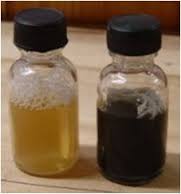
Illustration 2: Difference in color – one without bacterial contamination and the other with contamination
Removing contaminants with the sun
So how does one remove water contaminants? An ultra violet based filter, boiling the water, or just exposing the water to sunlight can do the trick. In areas with limited financial resources, off the shelf filters are not a viable option, and boiling is not a common practice as it uses up cooking gas. So that leaves using solar radiation for disinfection. This method, called SODIS (Solar Disinfection) involves filling plastic bottles with the contaminated water sample and exposing it to sunlight for 8 hours (or longer if it is cloudier). To confirm the sun exposure worked, a H2S strip test can be performed again after the SODIS exercise.
Though it can be difficult to test for all of the items listed under the drinking water quality standards, some basic properties like Total Dissolved Solids, Fluoride, Hardness, and pH can be tested for with a combination of chemical testing kits and hand held testing meters.
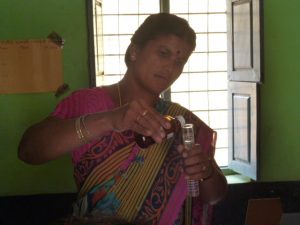
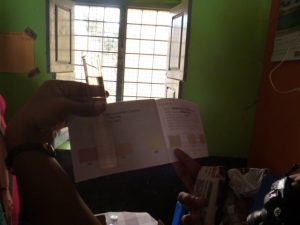
Illustration 3: Testing for fluoride in a school – matching the color in the tube with the test manual to check for fluoride concentration
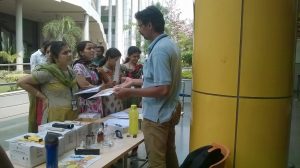
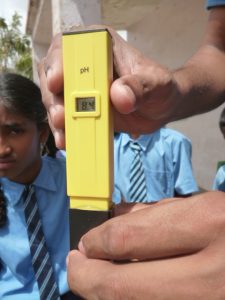
Illustration 4: Demonstration of handheld water quality testing meters
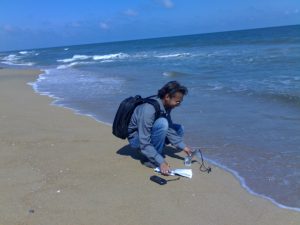
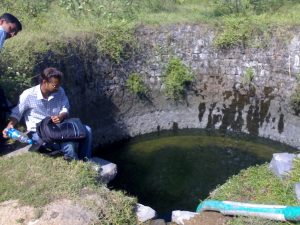
Illustration 5: Checking water quality of sea water and open well water
Knowing what factors define water quality along with taking proactive measures against contamination can be an effective deterrent against many avoidable diseases, so you can raise your glass to good health and increased productivity.
References:
https://www.epa.gov/dwstandardsregulations
https://en.wikipedia.org/wiki/Drinking_water_quality_standards
https://www.epa.gov/wqs-tech/state-specific-water-quality-standards-effective-under-clean-water-act-cwa
https://www.epa.gov/ground-water-and-drinking-water/table-regulated-drinking-water-contaminants
http://www.clemson.edu/extension/natural_resources/water/publications/fecal_coliform.html